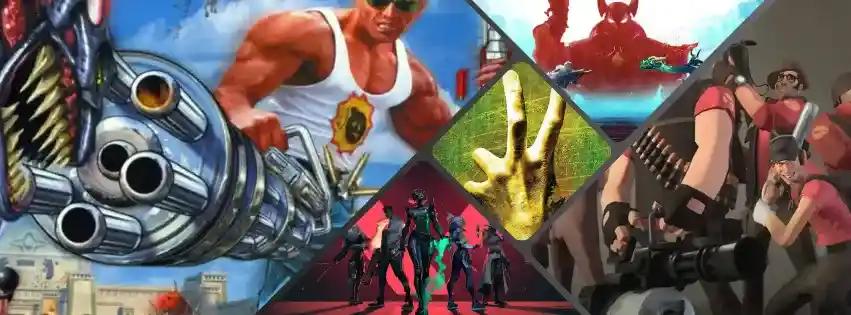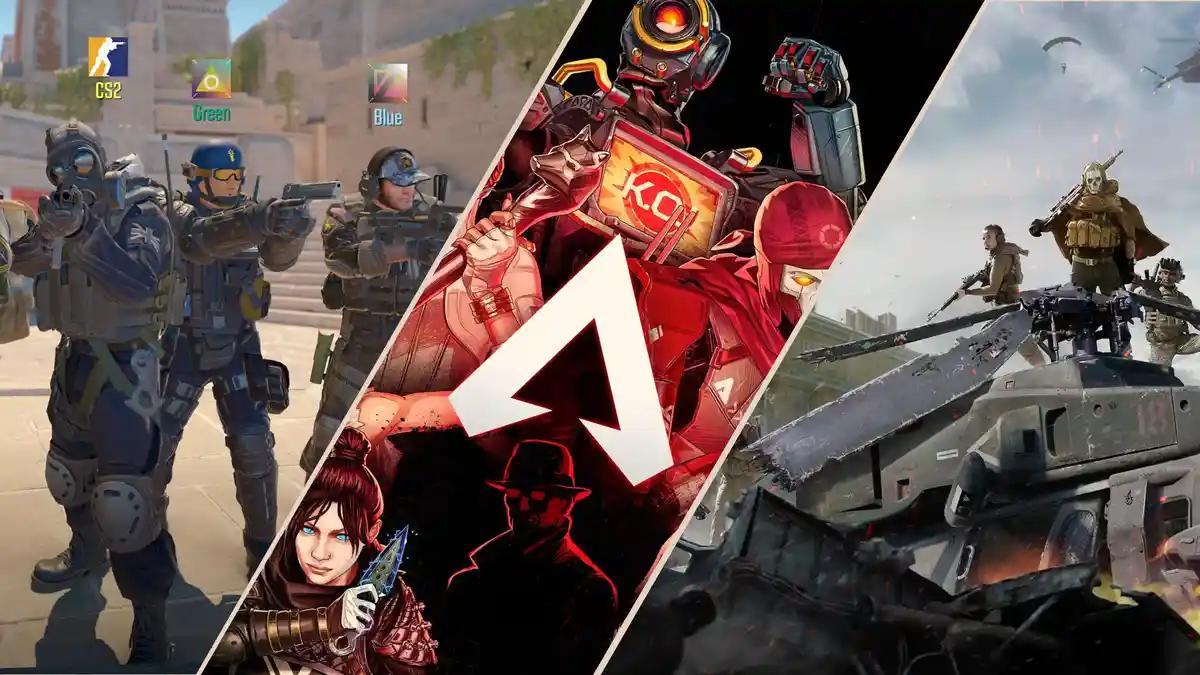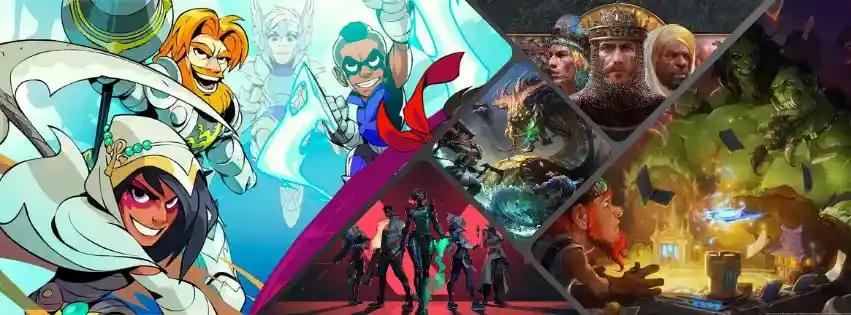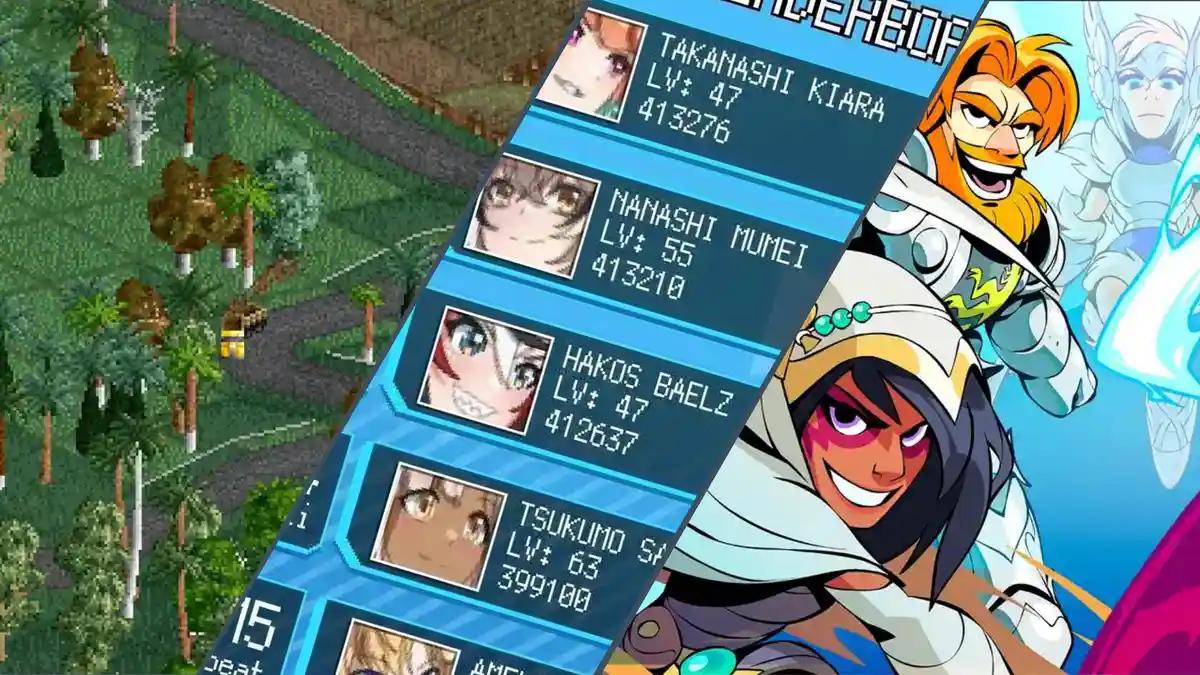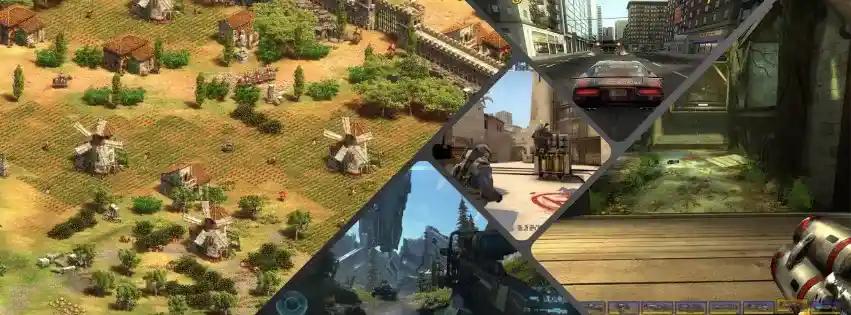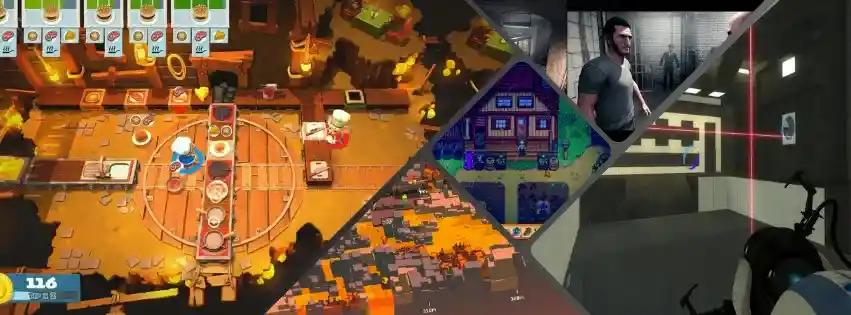Best Shooting Games for Low-End PCs
This guide ranks shooting games that run well on low-end PCs with integrated graphics. We focused on input responsiveness, proven iGPU performance at 720p–1080p Low, netcode stability and bandwidth needs, replay longevity, and ease of setup. We flag online-only requirements, note LAN/split-screen where available, and highlight scalable DX11/Vulkan paths and resolution scaling for extra headroom. You’ll find the top 10 picks in ranked order, followed by five honorable mentions that barely missed out but are still worth a look for specific preferences or hardware constraints.
This article is part of our guide on the Best Low-End PC Games
How We Ranked These Games
We applied weighted criteria that reward smooth iGPU performance, crisp gunfeel, stable online play, and approachable setup. The table below outlines our weights and why each factor matters.
Criterion | Weight | Why It Matters |
|---|---|---|
Low end compatibility | 40% | Ensures stable 30–60 FPS on integrated GPUs at low settings with scalable backends. |
Gunplay and controls | 25% | Prioritizes aiming feel, recoil, and responsiveness that hold up at lower frame rates. |
Multiplayer quality | 15% | Rewards reliable netcode, modest bandwidth needs, and healthy matchmaking or LAN options. |
Accessibility onboarding | 10% | Considers setup friction, control options, tutorials, and clear graphics presets. |
Replay value | 10% | Favors modes, unlocks, and progression that stay engaging on budget systems. |
Related reading: Best Multiplayer Games for Low-End PCs
What do we mean with low-end hardware?
So what exactly do we mean when we say low-end hardware? We have to come up with a baseline somehow. To run the games we chose smoothly, make sure your laptop or pc matches at least the minimum specs:
Component | Minimum Requirement | Recommended |
|---|---|---|
CPU | Intel Core i3 / AMD Ryzen 3 (8th gen or newer) | Intel Core i5 / Ryzen 5 |
RAM | 8GB | 16GB |
Storage | 256GB SSD | 512GB SSD |
Graphics | Integrated (Intel UHD / AMD Vega) | Iris Xe or better |
Display | 1080p resolution | 1080p IPS panel |
OS | Windows 10 or 11 | Windows 11 |
Related reading: Best Offline Games for Low-End PCs
The Top 10 Best Shooting Games for Low-End PCs
Ranked from #1 to #10, these shooters combine strong gunfeel with optimization that respects integrated graphics and small SSDs. With clear notes on online requirements, LAN/split-screen availability, and settings that help you hit smooth frame rates.

Valorant
“Riot's ultra-optimized tactical FPS built specifically for low-spec competitive play”
Editors Take
Valorant tops this list because it’s engineered to stay responsive on low-end hardware while preserving crisp gunfeel. On integrated graphics, players routinely report stable 60 FPS at 720p Low, helped by a lean DX11 path and resolution scaling. Input latency is excellent, and the small install won’t choke a modest SSD. Netcode and anti-cheat are reliable, with low bandwidth needs and consistent matchmaking. It’s approachable thanks to a strong practice range and clear recoil behavior, yet deep enough to sustain long-term competitive play. For tactical shooting on iGPUs, it sets the standard.
Full Details
Game Experience

Team Fortress 2
“Timeless class-based shooter with perfect low-end optimization and endless content”
Editors Take
Team Fortress 2 remains a model of low-spec scalability. The Source engine hits triple-digit frame rates on modest integrated GPUs, while classes and maps keep combat readable at low settings. It’s friendly to small SSDs and low bandwidth, with LAN and offline practice for truly constrained setups. The huge community and Workshop keep modes and maps fresh, and the controls are flexible with raw input and FOV tweaks. It doesn’t modernize like newer titles, but its performance headroom, stable netcode, and endless content make it a near-perfect fit for budget systems.
Full Details
Game Experience

BattleBit Remastered
“Low-poly Battlefield alternative designed explicitly for integrated graphics”
Editors Take
BattleBit Remastered is built to be Battlefield-scale warfare that runs on integrated graphics. Its low-poly art style and Unity optimizations let Iris Xe users push 60+ FPS at 1080p Low, and the 4GB install is kind to cramped SSDs. The shooting feels weighty but readable even at reduced resolutions, and resolution scaling plus FOV controls help with visibility. Netcode is reliable with modest bandwidth needs for the scale. Population dips outside peak hours can extend matchmaking times, but when servers are active, it’s the best large-battle experience for budget PCs.
Full Details
Game Experience

Quake Live
“Legendary arena shooter with perfect low-end performance and skill-based combat”
Editors Take
Quake Live delivers pure arena fundamentals with near-zero hardware friction. The id Tech 3 foundation screams on integrated GPUs—expect well over 100 FPS—and the 1GB footprint suits tiny SSDs. Weapons have clean feedback, movement is precise, and the HUD stays readable at low resolutions. Bandwidth demands are minimal, so even modest connections hold up. Its small but dedicated community and steep learning curve limit approachability, yet for players who want skill-first shooting that flies on old hardware, it’s a superb fit that respects every ounce of a low-end rig.
Full Details
Game Experience

Left 4 Dead 2
“Timeless co-op zombie shooter with ultra-light requirements and infinite mod content”
Editors Take
Left 4 Dead 2 remains a gold-standard co-op shooter for weak hardware. Source engine scalability means 60–100+ FPS on integrated GPUs at low settings, and the 13GB install is manageable. It excels offline or on LAN for low-bandwidth households, and online co-op is stable when available. Gunfeel is snappy, weapon readability is excellent at 720p, and the AI director keeps runs engaging. The Steam Workshop adds thousands of campaigns and tweaks without heavy performance cost. It’s easy to set up, endlessly replayable, and ideal for friends sharing a modest network.
Full Details
Game Experience

Serious Sam: The First Encounter
“Classic horde-based arena shooter with split-screen/LAN and 1GB footprint”
Editors Take
Serious Sam: The First Encounter is a horde-blasting time capsule that’s perfect for low-end PCs. The tiny ~1GB install, LAN and split-screen support, and rock-solid performance on integrated GPUs make it a rare combination of accessible and communal. Gunplay is punchy, strafing is responsive, and the arenas read clearly even at low resolutions. It’s ideal for offline gatherings or bandwidth-limited homes. While its mechanics are old-school and simple, the sheer enemy count and scalable difficulty offer satisfying arcade pacing that respects low-power hardware and small storage.
Full Details
Game Experience

Ultrakill
“Brutally fast boomer shooter with devil-may-cry style combat and ultra-light requirements”
Editors Take
ULTRAKILL brings modern precision to a retro-fast package that loves integrated graphics. Retro visuals and tight Unity optimization yield 100+ FPS on Iris Xe at 1080p Low, keeping inputs razor sharp. Weapon juggling and movement tech reward mastery, while a clear FOV slider and responsive controls aid readability on low settings. It lacks multiplayer, but its score-chasing structure and secrets carry strong longevity without an internet connection or big patches. For players who want mechanical depth and top-tier responsiveness on a basic laptop, it’s a standout single-player pick.
Full Details
Game Experience

Half-Life 2: Deathmatch
“Physics-based Source engine deathmatch with gravity gun chaos and LAN support”
Editors Take
Half-Life 2: Deathmatch is a lean, physics-forward alternative that thrives on weak systems. The Source engine produces excellent frame rates on iGPUs and the ~4GB footprint barely dents a small SSD. Gravity gun chaos and tight projectile reads make its combat distinct, and LAN plus bot support provide reliable low-bandwidth options. The active population isn’t huge, which limits matchmaking breadth, but for parties, LANs, and drop-in aim sessions, it remains a fast, responsive arena that scales down effortlessly while keeping gunplay crisp and readable at 720p.
Full Details
Game Experience

Roboquest (itch)
“Fast-paced roguelite FPS with satisfying gunplay and offline progression”
Editors Take
Roboquest nails the balance of speed, clarity, and replayability on a budget rig. Unity’s DX11/DX12 paths with resolution scaling deliver 60+ FPS on common iGPUs at Low settings, and the small install won’t crowd a 256GB SSD. The shooting feels snappy, with readable recoil and generous FOV control to offset low resolutions. Meta progression and varied builds keep solo runs fresh without requiring online services. Expect brief shader compilation hiccups on first launch, but performance steadies quickly, making it an easy recommendation for offline-friendly replay value.
Full Details
Game Experience

Paladins
“F2P hero shooter with better low-end performance than Overwatch 2”
Editors Take
Paladins survives on low-end PCs where newer hero shooters stumble. The UE3 foundation scales cleanly, with UHD 620 laptops achieving 60 FPS at 720p Low, and its ~30GB install is reasonable for a live service. Gunfeel and abilities remain responsive at reduced settings, and aim assist helps controller users. Matchmaking is stable with modest bandwidth needs. It’s not the flashiest option, and regular updates can add download overhead, but if your rig or connection struggles with heavier hero shooters, Paladins is a practical, free-to-play fit.
Full Details
Game Experience
Related reading: Top 10 Co-Op Games for Low-End Laptops
Honorable Mentions
These games are strong alternatives that fell just outside the top ten due to factors like install size, population, or added setup steps. They’re still great fits for specific tastes or slightly stronger iGPUs.
Splitgate
Splitgate’s Halo-style shooting plus portals adds tactical depth without taxing hardware. UE4 scales well here, and the install is small, making it friendly to tight SSDs. iGPU users can hit playable 50+ FPS at 720p Low, and matches are concise. It narrowly missed the top ten due to inconsistent population and matchmaking windows; depending on region and time of day, queues can drag. When lobbies are active, it’s a clever, responsive arena option with strong readability at lower resolutions and minimal bandwidth needs, just held back by player counts.
Titanfall 2
Titanfall 2’s campaign is a movement-shooter masterclass with precise gunfeel and smart level design that runs acceptably at 720p on iGPUs. It nearly made the top ten on mechanics alone. However, multiplayer now relies on the community Northstar client, which requires manual setup and server browsing. That mod dependency and a larger ~45GB install push it into honorable mention territory under our guardrails. If you’re comfortable installing Northstar and can spare the storage, it’s still one of the best-feeling shooters you can play on modest hardware.
The Finals
THE FINALS shows that a UE5 live-service shooter can be tuned for weaker systems with FSR and careful settings. Iris Xe-class iGPUs can reach roughly 45–55 FPS at 720p Low, and the destruction-driven gunplay feels modern and punchy. It missed the top ten because it effectively requires a newer iGPU baseline, is online-only, and can ship frequent, sizable updates that aren’t ideal for small SSDs or limited bandwidth. For players with a slightly stronger integrated GPU and reliable internet, it’s a surprisingly scalable current-gen option.
DOOM (2016)
DOOM (2016) earns a nod for its exemplary Vulkan performance on integrated graphics and top-tier single-player gunfeel. Many iGPU users can manage 45–60 FPS at 720p Low with sharp input response, and the campaign holds up brilliantly offline. It misses the top ten because the install hovers around 55GB—tough for 256GB SSDs—and the multiplayer scene is largely inactive, limiting its breadth for budget players seeking online options. If you have the storage and want a pure campaign experience, it’s still a stellar low-end showcase.
Insurgency: Sandstorm
Insurgency: Sandstorm delivers authentic, satisfying recoil and low TTK with LAN server support—a rare combo for tactical fans on a budget. With tuned settings, Iris Xe can reach 50–60 FPS at 720p, and local servers keep bandwidth needs minimal. It narrowly misses the top tier due to a heavier 40GB install, more volatile frame times on older CPUs, and higher baseline demands than most picks here. If you value realism and can tolerate 720p Low plus some tweaking, Sandstorm is a strong, scalable tactical option.
Related reading: Best Multiplayer PS5 Games
Frequently Asked Questions
Here are straightforward answers to common questions about running shooters on integrated graphics, bandwidth considerations, and settings that preserve responsiveness.
What bandwidth do I need for online shooters on a low-end PC?
Most featured games use modest bandwidth—often under 1 Mbps during play—though spikes can occur in large-scale matches. If your connection is unstable, favor titles with LAN or offline modes (e.g., Left 4 Dead 2, Serious Sam) or play on nearby regional servers.
Should I use DX11, DX12, or Vulkan on iGPUs?
Start with DX11 for the broadest compatibility. Use Vulkan when available and known to help frame pacing (e.g., DOOM 2016). DX12 can help some Unity/UE4 titles but may increase stutter on older drivers—test both paths if supported.
How do I improve frame rates without destroying image clarity?
Lower resolution to 900p or 720p and use resolution scaling or FSR if available. Reduce shadows, post-processing, and volumetrics first. Keep textures moderate if VRAM allows. Increase FOV slightly for situational awareness, but not so high that aliasing increases.
Are shader stutters a problem on integrated graphics?
They can be, especially on Unity/UE4 games during first-run shader compilation. Let the game compile shaders at boot if offered, or play a short warm-up session; stutters typically subside after assets are cached.
What if my storage is almost full?
Prioritize small installs like Quake Live, Serious Sam TFE, or BattleBit. Avoid titles with 50GB+ footprints unless you can clear space. Disable or limit Workshop/mode downloads and verify game file caches to keep update sizes in check.
Why is CS:GO not included?
While Counter-Strike: Global Offensive runs perfectly on modest hardware, and has been a staple of shooting games for many years, after the release of CS2, its availability has been unsure. There are still ways to play CS:GO but only on community service. It has effectively been replaced by CS2, which has higher hardware demands, and therefore did not make this list.
Conclusion
These recommendations balance responsive gunplay with realistic expectations for integrated graphics, bandwidth, and storage. Whether you need online competition, LAN-friendly co-op, or an offline campaign, each pick includes notes on performance, backends, and setup so you can dial in stable frame rates fast. If you’re upgrading later, many of these games scale up gracefully with better hardware. Ready for more tailored picks? Try our Recommendations Engine for suggestions that match your play style.
